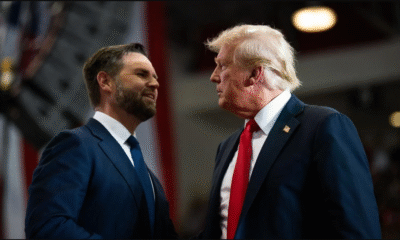Electric Vehicle
India must target 100 per cent electrification of two- and three-wheelers in four years: Kant
India must target 100 per cent electrification of two- and three-wheelers in the next four years as these segments will lead the country’s green mobility revolution, G20 Sherpa Amitabh Kant said on Wednesday.
The country’s focus has to be on shared, connected and an electric transportation movement, he said while speaking at the annual session of Automotive Component Manufacturers Association of India (ACMA). “My view is that green mobility revolution is really knocking on our doors, whether we like it or not, and India’s focus has to be on shared, connected and an electric transportation movement,” he said.
He further said, “I’m a believer that India’s electrification journey is to be about two-wheelers and three-wheelers.” It has to be two-wheelers and three-wheelers because 80 per cent of the total sales of vehicles is really about two-wheelers and three-wheelers in India right now, he asserted. Kant further said, “We need to target in the next four years, to my mind, India needs to target 100 per cent electrification of these two segments, go 100 per cent.”
In 2021-22, domestic two-wheeler sales stood at 1,34,66,412 units, while three-wheeler sales were at 2,60,995 units and overall vehicle sales across categories were at 1,75,13,596 units, according to Society of Indian Automobile Manufacturers (SIAM). As per the Federation of Automotive Dealers Associations (FADA), electric two-wheeler retail sales last fiscal stood at 2,31,338 units, up over five-fold from 41,046 units in 2020-21.
Total Electric Vehicle (EV) retails reached 4,29,217 units in 2021-22, a rise of three-fold from 1,34,821 units in the financial year 2020-21, the dealers body had said. Kant said transition to electric mobility is gaining ground as the cost of battery, which accounts for about 40 to 45 per cent of electric vehicle cost is falling rapidly. “It has seen a decline of over 100 per cent in the last five to six years. It’s going to come down to below USD 100 per kilowatt,” he added.
When that happens, he said, the initial cost of acquisition of an EV without any FAME subsidy will become cheaper than the comparable internal combustion engine vehicle. As such, he said the total cost of ownership of an EV is lower even now. Kant said Indian companies, including in the components sector must aim to become global champions in the new technology.
He, however, admitted that the EV sector still faces challenges when it comes to financing of these vehicles. “Firstly, I think there is a very high interest rate and we need to bring down lower interest rates for electric vehicles. There is a very high collateral and insurance charges, which need to be brought down,” Kant said.








































